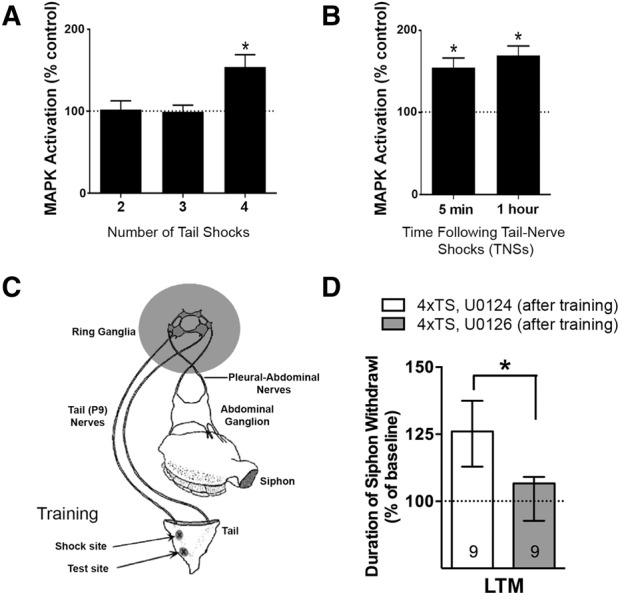Figure 1.

A sustained ERK/MAPK signaling recruited by multiple training trials is required for the consolidation of LTM in Aplysia. (A) A minimum of four spaced (ITI = 10 min) training tail shocks (trials) is required for the induction of post-training MAPK activity in sensory neuron (SN) somata. (B) MAPK activation is sustained at least 1 h following repeated tail-nerve shocks (4xTNSs, ITI = 10 min), an in vitro analog of repeated-trial sensitization training. Data in A, B are mean ± SEM. (C) Model of reduced behavioral preparation of the Aplysia tail-elicited siphon withdrawal (T-SW) reflex (Sutton et al. 2001). Unilateral testing and training sites are indicated (see arrows) and the ring ganglia of the central nervous system (CNS) is shaded to indicate that it can be further isolated for pharmacological manipulation of the tail SN component of the T-SW reflex circuitry. (D) Disruption of sustained MAPK activation by application of the active MEK inhibitor, U0126, delivered to the CNS after training (4xTS, U0126 [after training]), reveals that MAPK is required for consolidation of LTM for sensitization of the T-SW. Data are presented as median ± IQR.
